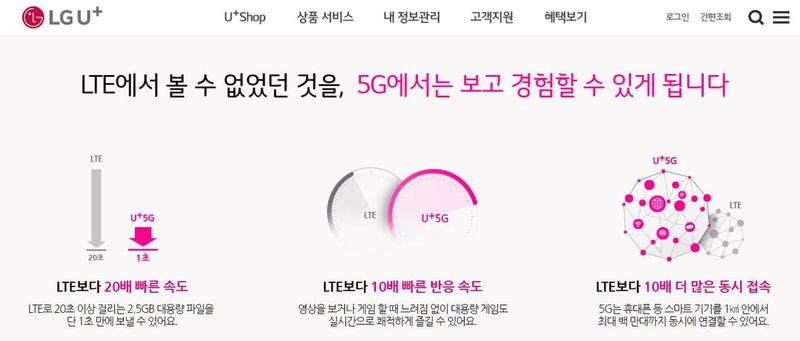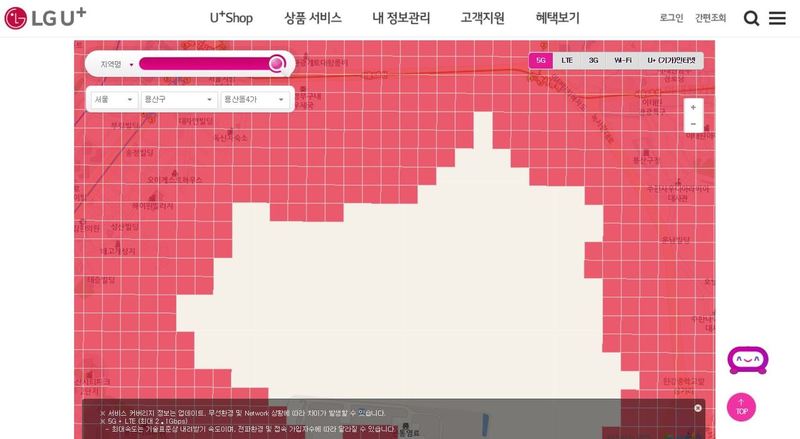 |
|
The fine print beneath a coverage map of LGU+ 5G mobile data service indicates that actual speeds may vary from the 20Gbps advertised, as low as 2.1Gbps.
|
Theoretical max speeds require installation of several new base stations
“A 2.5GB file that would take 20 seconds to send over LTE can be sent in a single second.” (LGU+) “Just 0.8 seconds for a huge movie! Watch the movie you want, in the moment you want it.” (KT) That’s how LGU+ and KT are advertising their 5G mobile data services, one month after the 5G network went online. The two companies are emphasizing that 5G is “20 times faster” than LTE. If you do the math, that would mean the service has a speed of 20Gbps (a transfer speed of 2.5GB per second). For KT and LGU+ to provide their advertised speed of 20Gbps, they would have to install base stations in the 28Ghz band – but currently their only base stations are in the 3.5Ghz band. In the end, 20Gbps is simply the maximum speed theoretically permitted by the 5G standard. It’s expected to take several years before base stations in the 28Ghz band are installed – and even those would be clustered in densely populated areas. The current speed on the 5G network, even at its fastest, is only double that of LTE, which means that the 5G speed the mobile carriers are advertising is inflated by a factor of 10. On its webpage, SKT advertises a current G5 speed of 2.7Gbps. To be clear, that’s the top speed when LTE and 5G are combined. So what’s the actual speed of LGU+ and KT’s 5G service? LGU+ has a top speed of 2.1Gbps (5G+LTE), while KT has a top speed of 2.4Gbps (5G+LTE), or 1.5Gbps.
 |
|
Information on the actual speed of LGU+ 5G mobile data service is written in very fine print on their website, beneath their coverage map.
|







